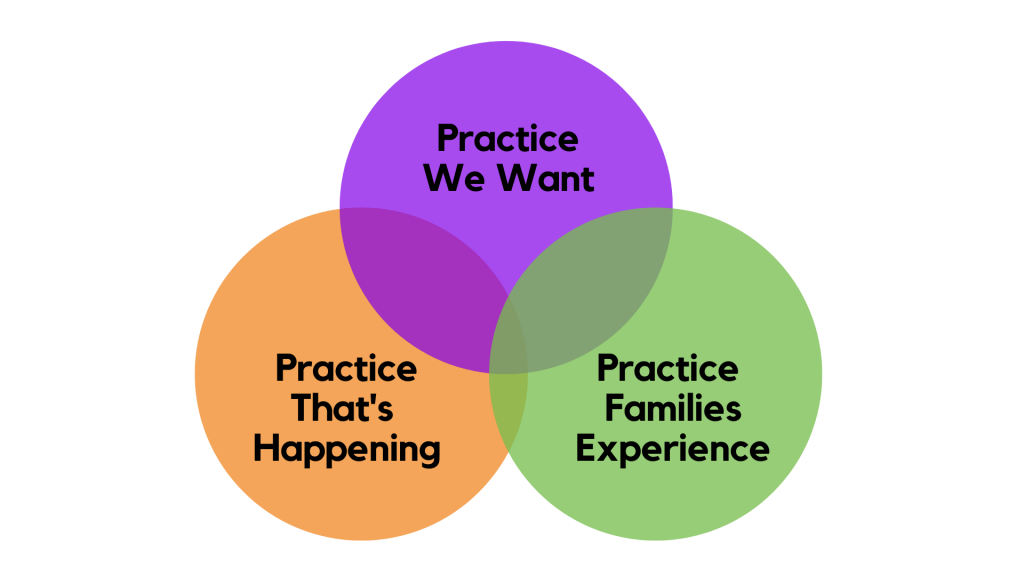As human-service leaders, we carry a vision for the practice we want to see happening with families and in our communities. Our aspirations are part of what led us to this role of leadership – wanting to see those aspirations become a reality in our organization’s practice. But what happens when the ‘practice we want’ seems impossibly disconnected from the practice that’s happening, which is even further from the practice that families experience? In talking with leaders of organizations of all shapes-and-sizes, this reality-aspiration gap is all-too familiar.
If we’re lucky, the practice we want, the practice that is happening, and the practice the families experience are planets in the same universe; more often than not, they are different universes altogether.
Aspirations become quickly grounded to the realities of organizational pressures. Staff turnover, budget constraints, the changing political landscape, and new regulations are just a few of our day-to-day realities that pull us quickly away from holding our vision front and center and from having that vision become reality.
The Practice We Want
We can describe the kind of practice we want…
- Trauma-informed? Yes.
- Family-centered? Yes.
- Anti-racist? Of Course.
- Engaging, Clear, Collaborative? Yup.
- Equitable? Uh huh!
Yes. Yes. And yes. The vision is there, and our aspirations are real but, there’s an illusion that trips us up.
The Practice That’s (actually) Happening
As we share a compelling, well-articulated vision throughout our organization, our expectations about that vision happening in everyday life can get the best of us. There are deadlines to meet, reports to write, forms to complete, and oh-so-many boxes to check. How can we shift the culture of the organization to support our vision?
“Culture does not change because we desire to change it. Culture changes when the organization is transformed; the culture reflects the realities of people working together every day.”
– Frances Hesselbein
We’re ready to make the real journey of transforming the organization. It won’t just be a new initiative, new training, or simply a new policy. Changing the practice will mean careful attention to every aspect of the culture. It will mean honoring and recognizing the good work that’s already happening. It will mean creating a learning organization and celebrating the details of success. Perhaps most foreign, it will mean listening carefully to those we serve.
The Families’ Experience
The true measure of our success is the outcomes we help bring about and in particular, hearing from the families we serve about their experience. We can easily get information about the number of separations, length of stay in care, and rates of reentry/recidivism. We need more than that. We need a system that gets feedback from service recipients and measures things that matter.
The most meaningful outcomes for children and families happen when there is alignment of:
- The practice we want
- The practice that’s happening
- The families experience

Author: Andrea Robideau (she/her)
Trainer, Consultant, Operating Officer, SafeGenerations